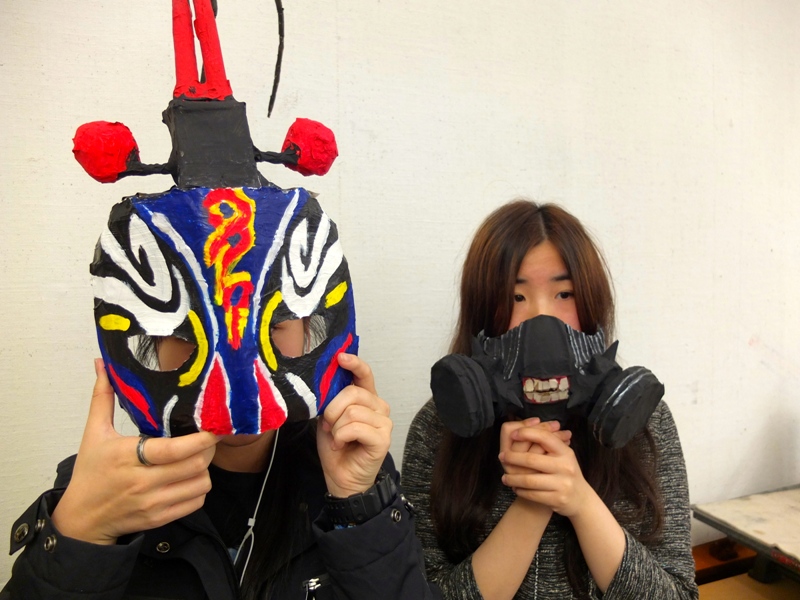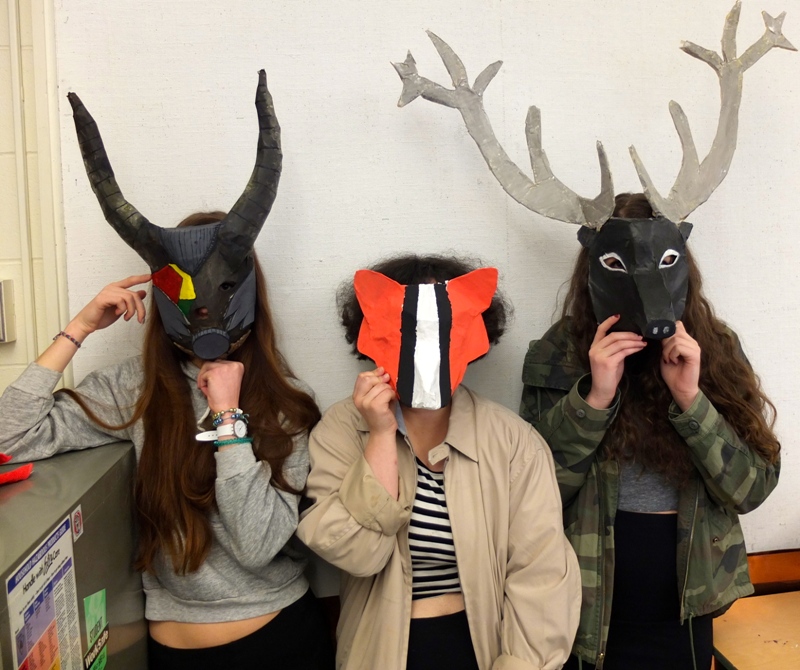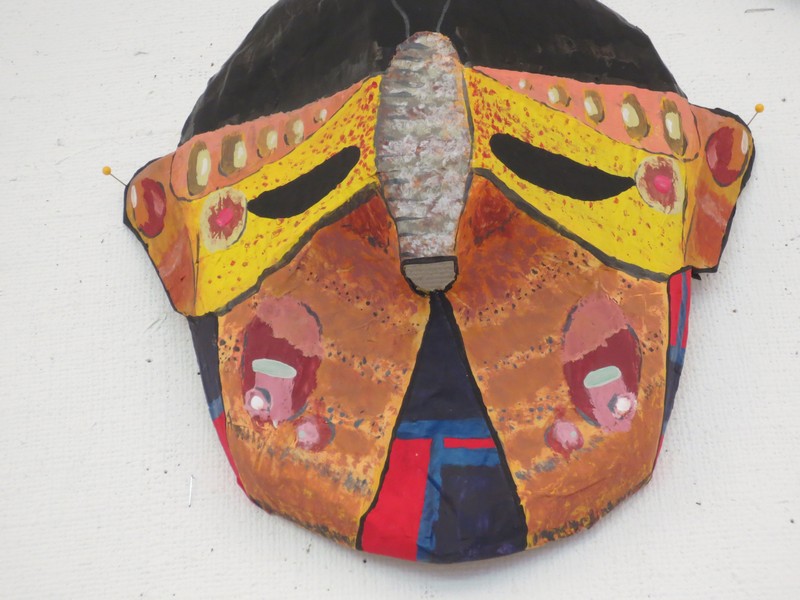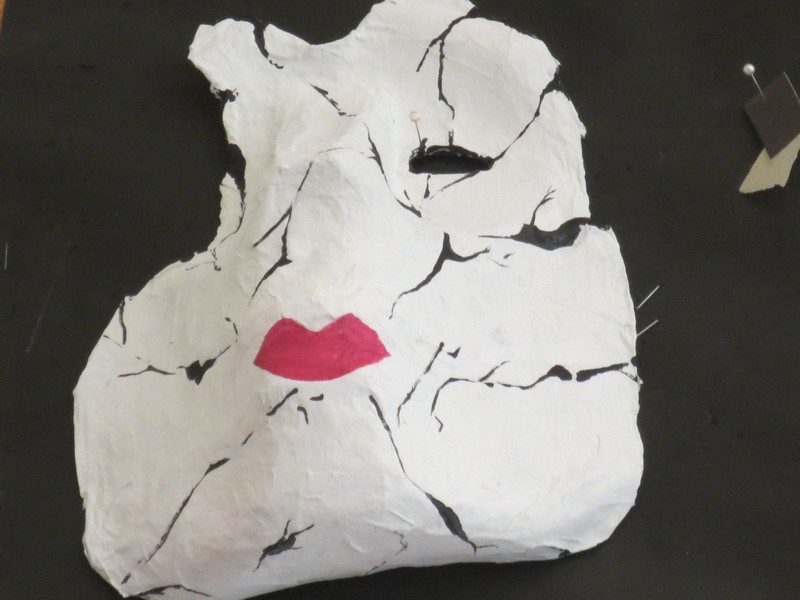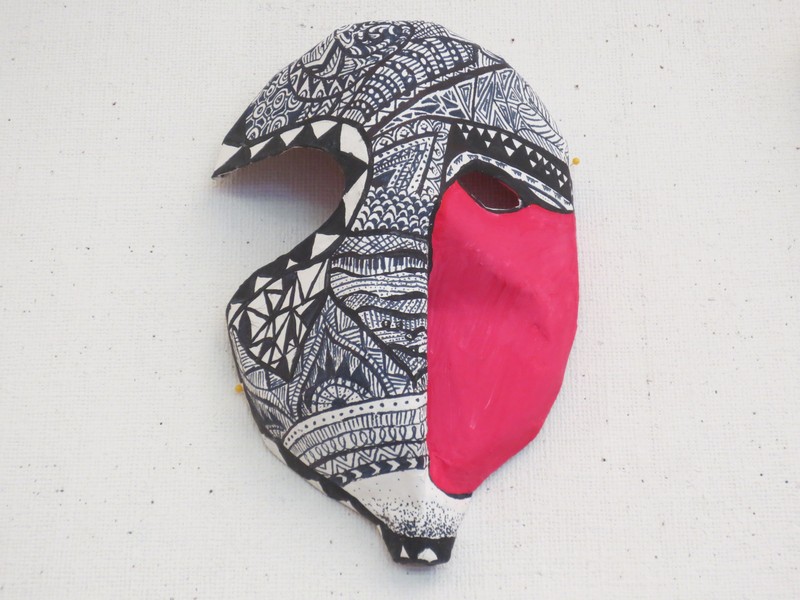Eric Hamber: Altered Perspectives & Identity
Arts Education, Social Studies
School: Eric Hamber Secondary, Vancouver
Teacher: Tristesse Seeliger
Artist Collaborators: Julia Kreutz
Class: Grade 9 - 12
Overview
Over the course of this project the students examined the topic of mask making through the exploring of altered perspectives and identity. Through mask making the students had the opportunity to imagine an identity other than their own, a costume to explore oneself in another person’s shoes, and a way to alter the way they view the world, while altering the way the world views them.
Connection to the Vancouver Biennale Exhibition
During the visit to Vancouver Biennale public art installations Giants and Love Your Beans, the students inquired into the community being a place of expression and of trying to understand the culture of the other. The students responded to questions such as how does the art works change the way we experience the environments they are in. Through exploring and interaction with the public art pieces and with each other, the students continued this art inquiry back in the classroom as a shared experience.
Their creative mask making process is a representation of their thoughts about themselves and community. Masks like public art were presented as a medium enabling altering of people and spaces.
BIG IDEAS
Art activates spaces and increases understanding of community, oneself and other. Preserving pluralistic worldview raises awareness about cultures around the world. It is important to have counter cultures represented that can co-exist against the dominant culture of the county.
Guiding Questions
What are the defining characteristics of each public art piece viewed by the students at the Vancouver Biennale?
How do these characteristics develop community and change perspective of space and its inhabitants?
Other Resources
Aboriginal/contemporary art – Brian Jungen, Wade Davis anthropologist, Dino Real
Cross-Curricular Access
Pluralistic culture with links to social studies, ritual
Mask making linking to drama, anthropology, film making, design and fashion.
Learning Process/Inquiry Challenges
Field trip: The objective of the field trip was to work with students to actively engage with the public artworks: Giants by Os Gemeos and Love your Beans. During the field trip, the students were given tasks and activities to be completed independently or in groups. The tasks were mostly related to documenting what was the most striking aspect of the installations for them. They had to do this using cameras. Some of the challenges they had included:
- Write a 1 -2 paragraph story explaining how the Giants came to be in this spot. This is a creative writing / imagination building exercise that will help you get into the mode of looking at public sculpture and art. Be as creative as possible and any interpretation is possible.
- Write a 1 – 2 paragraph story explaining how the Beans came to be in this spot.
- What makes sculpture different from other types of art?
- How does your body relate and compare to these two pieces?
- Photograph your group as being apart of the art.
- How does the art works change the way we experience the environments they are in?
- How does public art become a shared experience?
- Take these photos (1 photo at least for each of the sculptures): a photo that is a reflection of the sculptures: Take a photo that initiates you into the tribe of the giants: Take a photo on the beans: Take a photo that is either a bird’s eye or ant’s eye view of the sculptures.
Independently and in groups, the students completed their tasks and had an enjoyable hand-on learning experience by interacting and engaging with artwork and looking at it in various perspectives. The students were encouraged to post some of their photos to their Instagram account to enable the entire class to view their photos and experiences.
Post-field trip: The workshop post the field trip included sharing reflections, thoughts and ideas about the artwork. All the photos and instagram posts were reviewed by the class. The students, along with the artist and teacher, watcher stop-motion film of Giants and the film of Cosimo Cavallaro speaking about his beans in California. Then the students were allowed time to write their stories about how Giants and how Love Your Beans came to be where they are. Then they read their creative renditions aloud to the class.
As a part of the post-field trip sharing and reflection exercise, the artist and the teacher led an activity that got the students thinking about moments in their life where their perspective had shifted, they shared their experiences on sheets of paper and we went around reading one another’s.
Introduction to masks and mask-making: Before giving them an introduction about masks and mask-making, the artist engaged the students in a discussion about community being a place of expression and of trying to understand the culture of the other. In that context the students were asked about how they would like to alter the world and themselves. They were asked to create a mask which represented that their thoughts about themselves and community. Following this, the artist presented to the students a brief history of mask-making and how masks enable in altering people and spaces.
The students then began to plan out their masks, by creating concept drawings using pencil and watercolor. They used symbols to help describe their meaning to the viewer (eg. certain animals have meaning in different parts of the work, different drawn symbols act as a language for communication without words, colours also hold meaning in different cultures).
Mask-making Activity: In the next workshop, the students began to work on their masks by first creating the base of their masks. Using recycled milk cans, the students prepared the base of their masks following the demonstration of the artist. The next step in preparing their masks was to use paper mache to construct the details of the masks. The students had to complete three layers on the mask to ensure it is sturdy. The next step was to start painting the masks using acrylic paints. Finally, the students attached ropes/ strings to be able to wear their masks.
Student Creation
Masks
Timeline
January
Planning and conceptualizing sessions. The artist and the teachers planned the entire project, enlisting the objectives, approach, workshop activities
February
• Visit sculptures for inspiration and discussion
March – April
• Created imaginative narratives about the installations
• Shared experiences and photos from the field trip
• Developed a concept for their mask using pencil and watercolor, drawing from their learning and experiences from the field trip
• Artist demonstration: preparing the base of the mask, constructing details using paper mache, painting with acrylic
• Students created masks
May
• Final art exhibition
Reflection
Artist – Julia Kreutz
The over arching essential question was how does mask making and use promote the understanding of other and oneself? How is this related to public art?
For our first class together we went on the field trip and the students worked on a challenge in small groups. We allowed the students to have a lot of freedom while viewing the works and to enjoy the experience in small groups of their choice. Then we came together before we left each location and took some group photographs.
On the next day we met I showed the students the stop film of Giants and we watched the film of Cosimo Cavallaro speaking about his beans in California. Then we allowed time for the students to write their stories about how Giants and how Love Your Beans came to be where they are. Then they read their creative renditions allowed to the class.
The next class we did an activity that got the students thinking about moments in their life where their perspective had shifted, they shared their experiences on sheets of paper and we went around reading one another’s.
Finally, I taught the students how to use recyclable material to create paper machë masks that would represent a paradigm shift for themselves, or to shift peoples perspectives that view them.
They created a plan on paper with pencil and watercolour and started on creating their masks.
Credits
Photos at the Giants and Love Your Beans by roaming-the-planet

